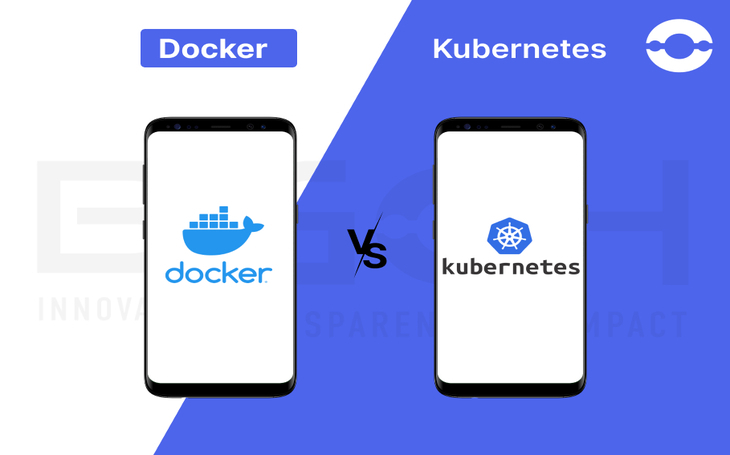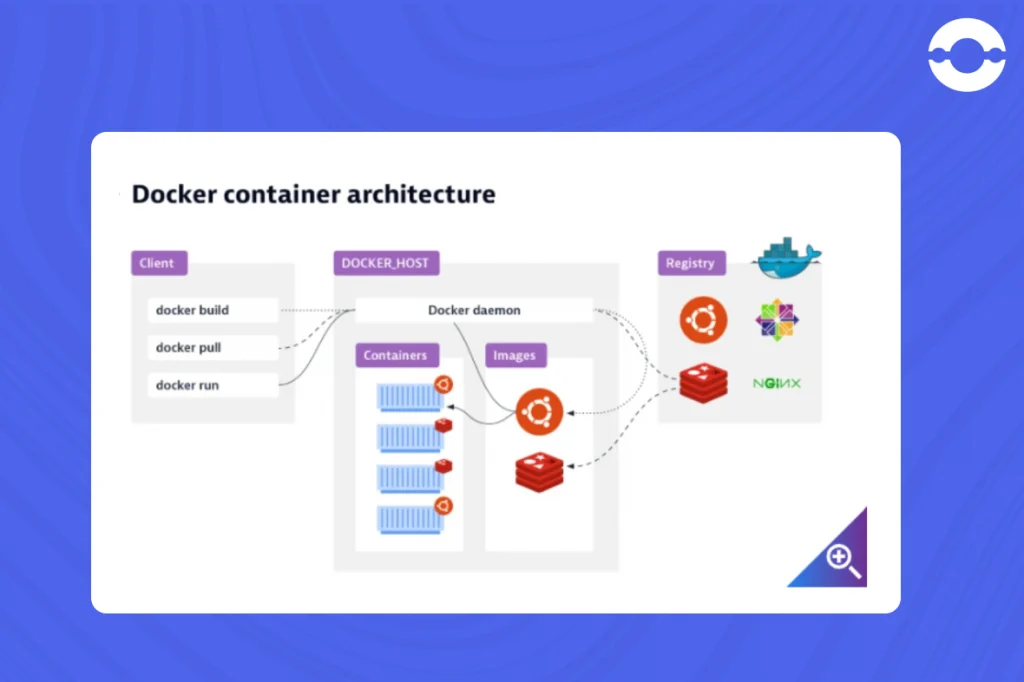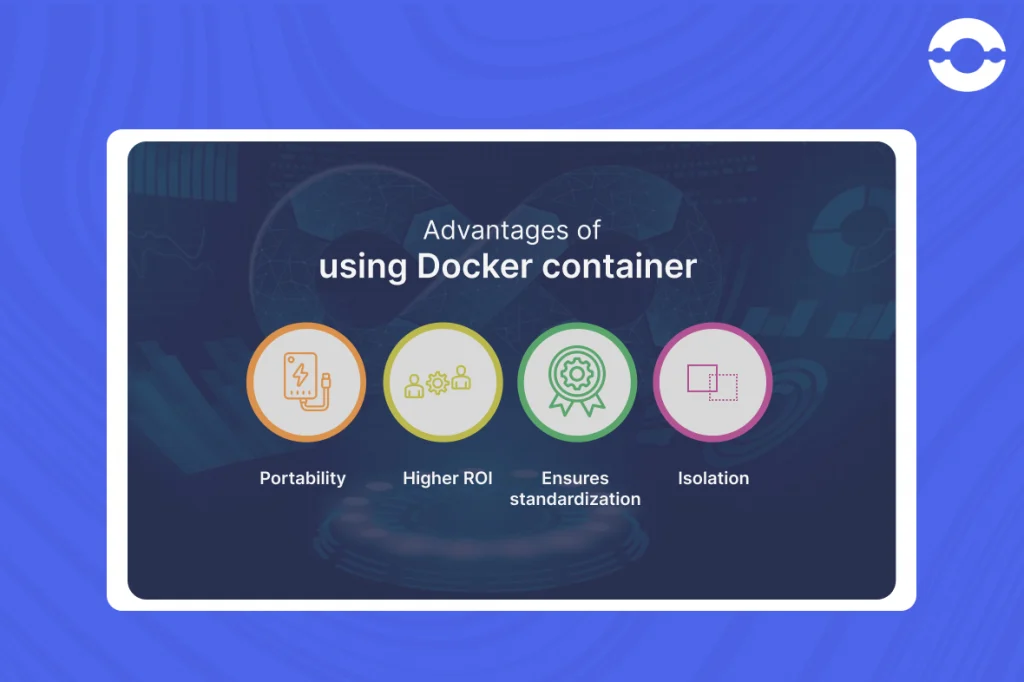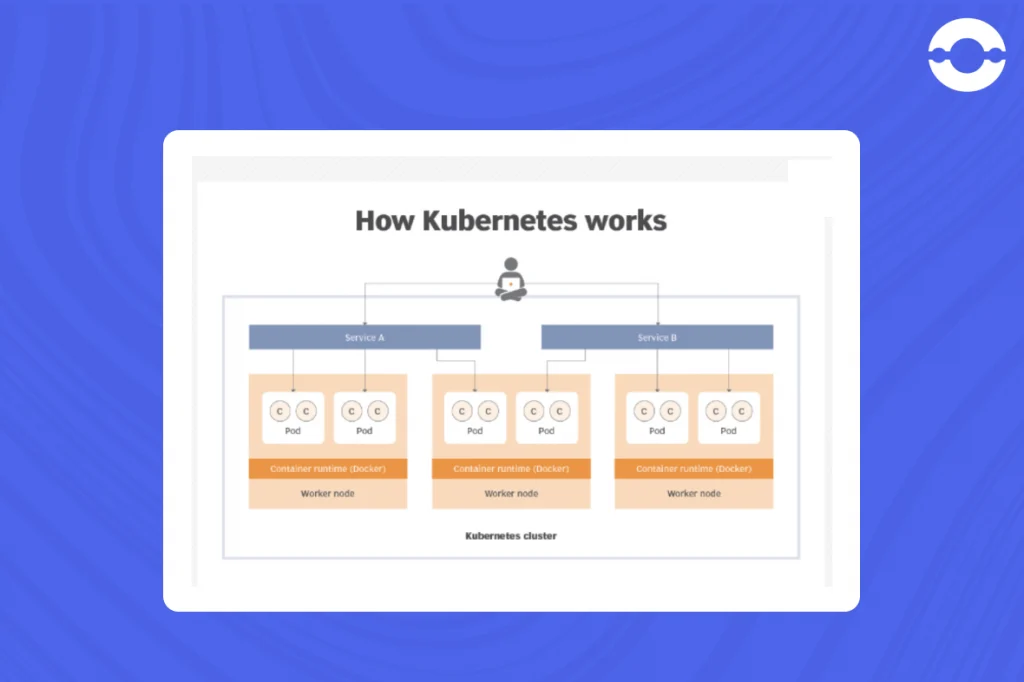
If you are someone who probably does not have any idea about the world of containerization, then this guide is for you. Docker vs. Kubernetes both sound the same to everyone however they are completely different. In this blog, we will dive deeper to make you understand Docker vs. Kubernetes, its benefits, and how they fit into containerization.
What is Containerization?
Containerization is related to packing and deploying applications in portable containers. Additionally, Containerization enables the developers to move applications from the development environment to the production environment.
Container primarily refers to the box where an application along with its dependencies such as port, content, settings, configuration, etc., is combined and packed. As containers are portable and lightweight, it becomes easy for developers to run the application smoothly.
Containers are different from virtual machines as they only virtualize the operating system. The prime objective of containers is to wrap the entire application so that it becomes executable in different environments.
Here, applications work in isolated environments, sharing the common operating system. Containerization is an excellent medium for software developers to deploy and run their apps on various infrastructures.
Consider an example where a developer develops code in one environment. However, when he/she transfers it to another location, developers find bugs in the code, such as when the developer transfers the code from the Linux operating system to Windows.
The developer writes the code along with any dependencies in the docker file. Then, a docker image is generated. A docker image serves as an operating system; finally, an application is ready to be deployed. Each container is isolated from other containers and does not interfere with other apps.

In containerization, virtual hardware or operating system is not required to run the applications because virtual machines consume lots of resources. Docker is used to create and manage containers.
Read Also: Monitoring Tools in DevOps
What is a Docker?

Whenever developers develop a product, certain issues occur. The app runs smoothly on the developer machine, but when it is deployed in the production environment, it does not work. The project fails to work with the same performance.
However, this problem can be solved by installing Docker on your system. Docker was introduced by a company called Docker in 2013. It is compatible with any programming language or any project. It is a kind of airtight sealed container, and these containers are the heart of Docker.
Docker can run on Windows, Linux, Mac OS, etc.
Docker containers wrap up your entire code and are also portable. Hence, The developer can take the container, put it into the system, and run your app seamlessly.
Docker refers to the software that allows developers to create these containers. Everything is packed in a docker container: code, dependencies, configurations, and processes.
Docker is a container technology that allows developers to run the application on any server. It contains all app dependencies, and the app gets deployed when the container is shifted to another server.
Docker does not have an operating system. It shares the kernel of the host. If you deploy the app in a container, it consumes fewer resources. Docker is free, allowing developers to create, deploy and run apps using containers.
Apps run the same no matter where they are running. Docker uses less disk space as it can reuse files effectively. Developers can install Docker on the machine, begin with a docker file, run it into a docker image, and docker image run as a docker container.
Advantages of Using Docker Container

1. Portability
Docker containers are portable and can be moved to production, development, and testing environments. The developer need not worry about doing any more configurations or adjusting system compatibilities.
Developers can deploy the container on any system, and the application runs smoothly.
2. Higher ROI
The most prominent advantage of using Docker is that it increases the ROI of the business. As docker containers consume fewer resources, the cost of spending extra bucks on infrastructure resources drives down.
Additionally, Docker uses fewer resources; it saves money for an organization ranging from server costs to hiring employees to maintain the Docker container.
3. Ensures Standardization
Docker provides a consistent environment for your applications by eliminating issues related to running the application on different OS. Docker images work like Git repositories, wherein developers can change docker images.
For Instance – The developer performs the component upgrade, but it breaks the entire environment. In that case, the developer can return to the previous version of the docker image, and the whole process can be tested within a few minutes.
4. Isolation
Docker makes sure that all your applications will be segregated. In addition, Each container is working in isolation, and each container has different resources and various applications running.
Furthermore, Developers can use various containers for running separate applications. If you don’t need any application, the developer can delete the container simply.
What is a Kubernetes?

Kubernetes is an open-source orchestration tool that Google develops. Thus, Developers can manage apps made up of thousands of containers with Kubernetes.
Earlier, companies used to deploy their applications on a physical server.
It is also the case for large-scale enterprises. In the case of physical servers, companies need to procure physical servers. So, They need many engineers and admins to install and spend more money on an application.
In addition to this, deploying apps on the server takes a lot of time.
Then the introduction of virtual machines came into existence. Companies do not need to buy physical servers. In 2013, the introduction of containers took place.
Now, companies have dozens of containers; they need an orchestration system to manage containers. Since then, Kubernetes has evolved. Kubernetes makes the deployment of your app much more effortless. It serves as a management tool for containerized apps.
According to Google,” Kubernetes is an open-source platform for managing containerized workloads.
Advantages of Using Kubernetes
Here are the 3 advantages of using Kubernetes-
1. Supports Multi-Cloud Capability
Kubernetes supports the multi-cloud capability of developers, where they can manage their workloads in a single cloud. It also allows containerized applications to move between cloud platforms, giving developers a way to deploy applications on the go with minimum effort.
Additionally, Kubernetes has support from multiple cloud platforms such as google cloud, Microsoft Azure, amazon web services, etc.
2. Cost Efficiency & Effective Resource Allocation
The prime motto of Kubernetes is to manage containerized workloads and, at the same time, so that there is no underutilization or overutilization of containers. Thus, saving organizational resources.
Additionally, it allows the developers to scale up or down the applications and use the resources when needed.
3. Kubernetes is an Open Source.
Developers need not worry about getting a software license for buying Kubernetes, as Kubernetes is an open-source platform. It has got huge support from the community and is available for anyone to use it.
Docker vs. Kubernetes
| Basis of comparison | Docker | Kubernetes |
| Installation | Docker’s installation and setup process can be performed on the go by executing 2-3 commands. | The installation and setup process for Kubernetes is quite complex |
| Autoscaling | Kubernetes supports auto-scaling. If the load on the pod increases, the number of pods multiplies. | While Kubernetes supports auto-scaling. If the load on the pod increases, the number of pods multiplies. |
| Developed by | The docker company develops Docker | Google developed Kubernetes |
| Purpose | The main motto of docker is to pack and deploy applications along with their dependencies in the container. | Kubernetes is an open-source container orchestration tool that is used to manage containers |
| Documentation | Docker’s documentation is more extensive as it is a detailed guide that covers everything from installation to deployment, provides step-by-step instructions to developers about how things work | On the contrary, Kubernetes documentation is not extensive, but it does cover everything |
| Suitability | Docker’s documentation is more extensive as it is a detailed guide that covers everything from installation to deployment, provides step-by-step instructions to developers about how things work | While Kubernetes is suitable for complex-level deployments and requires an advanced orchestration management system |
To Sum Up
Now, you get the idea of what Docker vs. Kubernetes is. If you would ask us which is best, “Docker vs. Kubernetes,” The answer is completely subjective. Choosing Docker vs. Kubernetes depends on your use case. However, to help you make a better choice, you can choose the one that suits your requirements.
When to use Docker?
- When you want to package and run the apps in containers
- When you want to deploy the application quickly
- To ensure that app runs consistently across different environments
When to use Kubernetes?
- When you want to manage containers
- When you want to manage complex app architectures
- When you want to handle rolling updates and you want that users should not experience downtime in the application
FAQs
Virtualization is responsible for running multiple virtual machines on a single host, while containerization is related to packing and deploying applications in portable containers.
In the case of virtualization, the boot-up time required to create virtual machines is slow. In containerization, you can create virtual machines within a few seconds.
Docker is an effective tool for containerization that allows you to package and deploy your applications in containers. Here are the benefits of using Docker in a containerized environment:
1. Portability
2. Higher ROI
3. Ensures standardization
Kubernetes allows you to automate the deployments of containerized applications. In the case of Kubernetes, you can define the configuration of an application using Kubernetes helm charts, and then Kubernetes uses the configuration to deploy the application.
A Kubernetes cluster is a group of computers that work together to manage containerized applications. Moreover, It uses a master node to control and orchestrate containerized applications’ deployment, scaling, and management across multiple worker nodes.
The master node uses the Kubernetes API to communicate with the worker nodes, which run the containerized applications. This allows for efficient management of applications at scale, with automated scaling, fault tolerance, and self-healing capabilities.
Also Read: DevOps Best Practices




